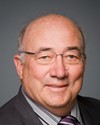We held public hearings. We thoroughly reviewed the issue. Interveners for all parties appeared before us, and we made a decision. As I just pointed out to your colleague, each media has its own Canadian content level, and it all depends on the circumstances. For conventional radio, it's 7 per cent. For satellite radio, that amount is equivalent to a number of radio stations. It is 85 per cent for every Canadian channel. However, if you multiply that by the number of on-air hours, you quickly realize that it's the equivalent in terms of Canadian content of 20 radio stations. Foreign content on conventional radio stations is 65 per cent, but if you add the 35 per cent, in terms of total hours, you realize that for satellite radio, that is the equivalent of a great many conventional radio stations.
Having said that, in my opinion, that is not the reason why we set that particular level. We believe this was the maximum that could be demanded under the circumstances, whether it be with respect to Canadian content or French channels. I don't know how many subscribers there are in Quebec, given that this information is confidential, but based on newspaper reports, we can assume there are about 20,000. At the same time, truckers travelling all across Canada have access to 107 satellite radio stations, although that does not include any stations in French. However, if you travel to Florida in the winter or to Maine in the summer, you can access four channels on one network and five channels on another network that do broadcast Francophone content, that is added to Canadian content overall.
Personally, I believe it would have been preferable to set a higher level, but we felt, as we did for ethnic radio, specialized radio, and specialized radio and television, that this was the most that could be demanded of them.




